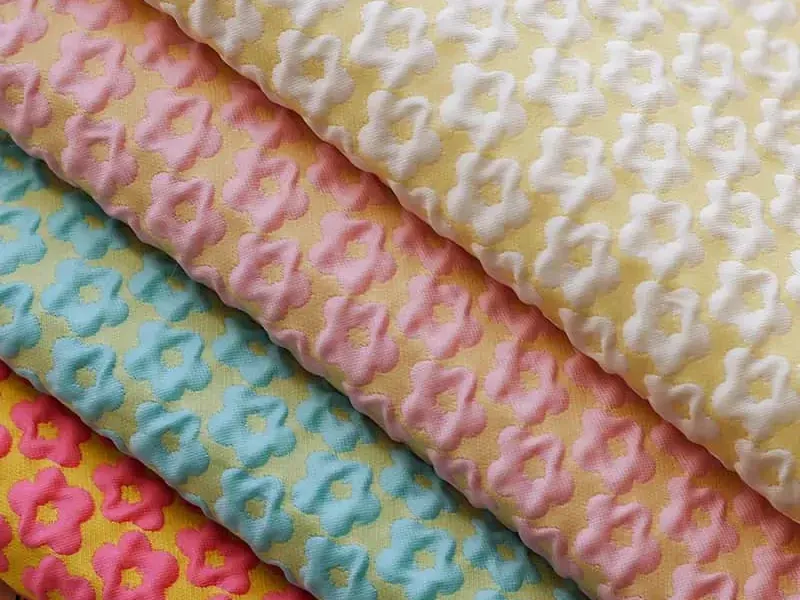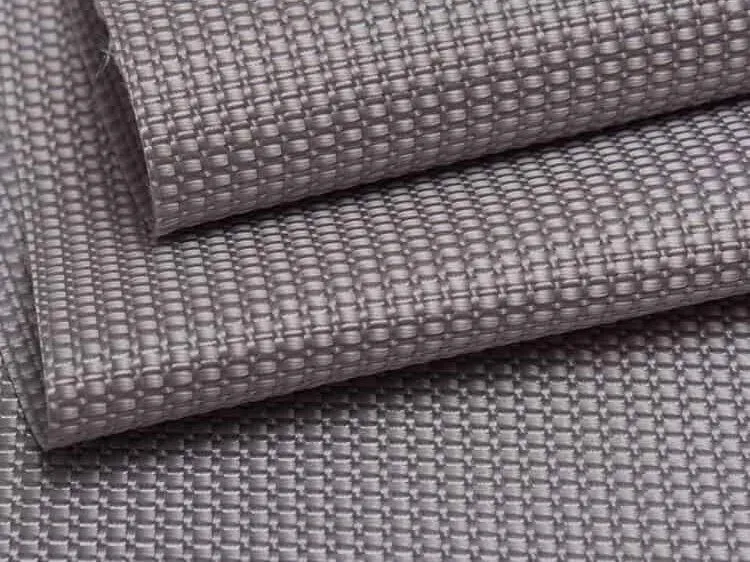Jacquard fabric is one of the most intricate and luxurious textiles available, known for its unique woven patterns that stand out with elegance and texture. This fabric, often produced using advanced circular knitting machines, has a rich history and modern-day appeal, making it widely popular in fashion, upholstery, and home decor. In this article, we’ll explore the characteristics of Jacquard fabric, how it’s made, and its various applications in everyday products.

Jacquard fabric is a woven textile that features designs or patterns woven directly into the fabric, rather than being printed or embroidered afterward. The key to creating these complex designs lies in the Jacquard loom, a special weaving tool that can raise and lower individual yarns to create intricate patterns. Unlike traditional fabrics where patterns are surface-applied, Jacquard’s designs are part of the very structure of the material, giving it a unique combination of durability and elegance.
One of the most attractive aspects of Jacquard fabric is its range of defining characteristics that make it stand out:
The designs on Jacquard fabrics are often elaborate, ranging from florals and geometric shapes to more abstract, artistic patterns. Because these patterns are woven into the material, they exhibit depth and dimension.
Jacquard fabrics come in various weights and textures, making them suitable for a wide range of applications, from lightweight clothing to heavier upholstery.
Since the patterns are woven into the fabric, Jacquard textiles are highly durable. They resist fading and wear, ensuring longevity even in demanding applications.
Rich Texture and Depth
Jacquard fabrics have a tactile, textured surface, giving them a premium feel that adds elegance to any design, whether in fashion or interior decor.
The creation of Jacquard fabric is a meticulous process that involves several steps:
Acquire the Textile Material
The first step is selecting the right fibers, such as cotton, silk, wool, or synthetic materials. The choice of fiber will depend on the intended use of the fabric, as each material offers different properties in terms of texture, durability, and appearance
Once the fibers are selected, they are spun into yarn. This yarn is what will be woven into the fabric, forming the structure and pattern of the final product.
Modern Jacquard looms are computerized, allowing for highly detailed patterns to be programmed into the loom. This precise programming controls each individual yarn, determining when it should be raised or lowered to form the desired design.
The yarn is then fed into the Jacquard loom, where it is intricately woven into the fabric, creating the distinct patterns Jacquard textiles are known for.
Expose the Fabric to Post-Production Treatments
After the fabric is woven, it often undergoes post-production treatments such as dyeing, finishing, and heat setting. These treatments enhance the fabric’s appearance, texture, and durability, making it ready for commercial use.
Jacquard fabric’s versatility means it can be found in a wide range of industries and products:
In fashion, Jacquard is used to create luxurious garments such as dresses, jackets, and evening wear. The intricate patterns and rich textures of Jacquard fabrics make them perfect for creating statement pieces that stand out.
In interior design, Jacquard fabrics are frequently used for draperies, upholstery, and bedding. The durability of the fabric, combined with its aesthetic appeal, makes it an excellent choice for high-traffic areas like living rooms or formal dining spaces.
Jacquard fabric is also used for smaller accessories like handbags, scarves, and ties. The intricate patterns add a touch of elegance and sophistication to everyday items.
Due to its strength and texture, Jacquard is widely used in furniture upholstery. Sofas, chairs, and even headboards benefit from the durability and luxurious feel of this fabric.
Jacquard fabric comes in a variety of types, each with unique characteristics suited to different applications:
Brocade: This type of Jacquard fabric is known for its ornate patterns, often incorporating metallic threads for a rich, luxurious look. Brocade is commonly used in formal wear and high-end home decor.
Damask Jacquard fabric is reversible, featuring intricate patterns that are woven into the fabric using a single color or tone-on-tone technique. It’s frequently used in both fashion and home decor.
This type of Jacquard fabric has a quilted appearance, offering a raised texture that mimics the look of padded fabric. It’s often used for bedspreads, pillows, and upholstery.
Tapestry Jacquard fabric is thick and features elaborate, multicolored patterns, often depicting scenes or intricate designs. This fabric is ideal for upholstery, wall hangings, and decorative pillows.
Jacquard fabric is a timeless, versatile textile that combines beauty, durability, and intricate design. Whether used in fashion, home decor, or upholstery, its woven patterns add a level of sophistication and elegance that few other fabrics can match. With its wide range of applications and the ability to create unique, long-lasting products, Jacquard continues to be a favorite choice for designers and manufacturers alike. Understanding the production process and characteristics of Jacquard fabric will help you make the best choice for your specific needs, ensuring that you enjoy both its aesthetic and functional benefits.


